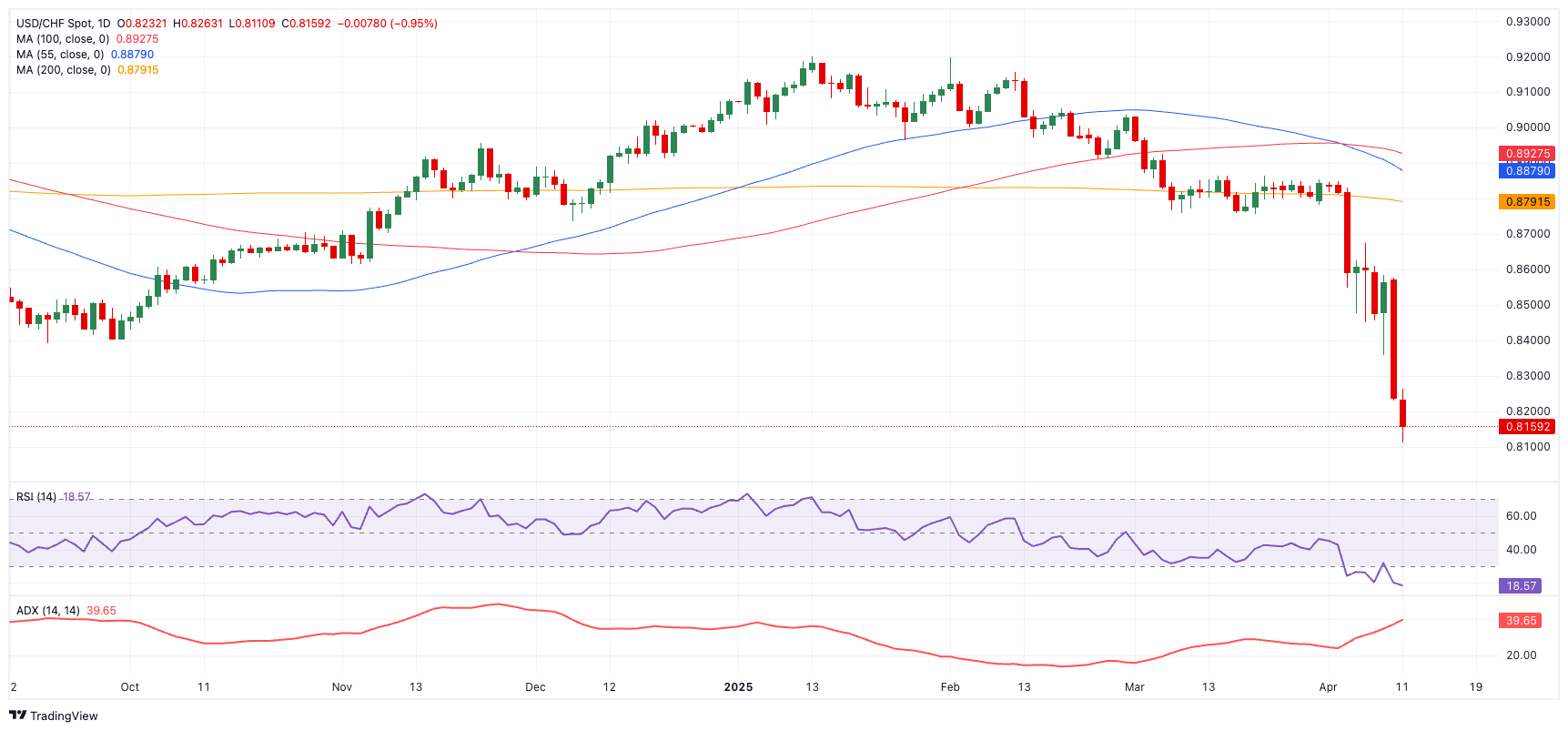USD/CHF bounces off lows near the 0.8100 zone, tariffs eyed
- USD/CHF drops to the vicinity of 0.8100 and rebounds.
- The demand for the safe-haven space underpins the Swiss franc.
- Attention now shifts to the release of the US Producer Prices.
China’s fresh round of tariffs bolsters CHF, hits USD
On Friday, Beijing dramatically ramped up tariffs on US imports to 125%, striking back at President Trump's move to hike duties on Chinese goods to 145%. This countermeasure has ramped up the tension in a trade war that now threatens to upend global supply chains.
That said, investors continue to seek refuge in the safe-haven space, lending extra legs to the Swiss currency and prompting the pair to retreat to the 0.8100 neighbourhood for the first time sin September 2011.
Meanwhile, US stagflation fears have been picking up pace strongly in the past few days, hurting the Greenback and triggering a steep correction in the US Dollar Index (DXY). The bearish tone in the US Dollar has been also propped up after investors’ repricing of more rate cuts by the Federal Reserve (Fed) this year, especially after US CPI data came in below consensus in March.
What’s next
Later, traders will be keeping a close eye on US inflation figures, as the March Producer Prices take centre stage. At the same time, the preliminary release of the Michigan Consumer Sentiment gauge will also attract plenty of attention—especially its inflation component, which often offers early clues about consumer spending and pricing pressures.
The day so far
Earlier on Friday, Switzerland’s Consumer Climate worsened slightly to -35 in March, according to SECO.
Key levels on the technical picture
Next on the downside for USD/CHF comes the 2025 floor at 0.8109 (April 11). The loss of this level could open the door to the 0.8000 round level, prior to the September 2011 low at 0.7710 (September 2).
On the upside, the next relevant level comes at the 200-day SMA at 0.8787, ahead of the weekly top of 0.8809 (March 14).
The pair trades within severe oversold conditions around 18, which could spark a probable technical uptick in the not-so-distant future.


